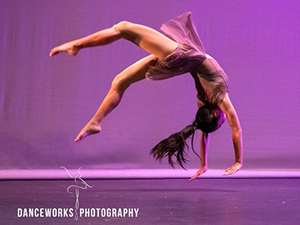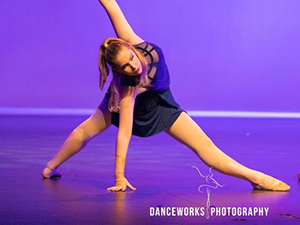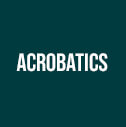Miss Lauren’s Top 5 Choreography Tips
So you have always wanted to make up a dance – you can see it in your head, on stage, the costumes, the music but completely stuck when it comes to making up the movements? Everyone has experienced choreography block including myself! Here are five tips to help you choreograph and create something totally new and unique.
1) INTENTION/RELATIONSHIP
The first step to choreographing a dance is deciding your audience and the intention behind the piece: what is the story or emotion you’re conveying? Are you performing for children or adults? Is it for a stage show or competition? Think about who you will be performing for so that your intention behind the piece is appropriate and will be understood by the audience. Then decide on the relationship of the dance. Will you perform it as a solo, duo, trio, small group or large ensemble? It is your decision what you feel would suit the piece the best and what will work for the size of the stage.
2) THE MUSIC
Choosing a good song or piece of music is absolutely vital when deciding to choreograph a dance, as the music will help to reinforce the story or message, along with the movements themselves. Choose music that also suits the genre of dance you have chosen: for example, perhaps make up a lyrical dance to portray a sad feeling. The music should have lyrics that make reinforce that sad emotion. If it’s an upbeat jazz dance, choose upbeat music that suits the techniques used as well as the theme of the piece. Always listen to the music properly and make sure it’s age appropriate for your audience too. If you need to cut or edit your music, do so slowly and carefully – avoid awkward pauses or skipped beats. If your music has four beats in a bar, ensure the counts still add up after you’ve cut or edited.
3) IMPROVISE & FILM
Once you have selected your music, listen to it a few times with your eyes closed. Visualise what the movements might feel like. Then, play the music out loud and improvise – it’s better to do this on your own so that you feel completely comfortable. It is also good to just keep the music playing on repeat and try different moves and tricks. Another top tip is to film yourself improvising, as most of the time you won’t retain what you just did. Whilst some people find it awkward, it is really important to watch the videos back – you might see steps that you like and can workshop and adapt them. The key to improvisation is letting your mind go and not overthinking it. Relax into it, and the magic will happen.
4) ELEMENTS OF DANCE
When structuring a dance piece, it’s important to make use of the four elements of dance. Body, energy, space and time… “BEST”. Body refers to what we move. Are you wanting to do a kick with your leg or use your elbow? It can be any part of the body, so think of different body parts and how each move flows into another. Energy refers to how we move. Are you moving fast or slow? Explosive, or restrained? Think about different energies you can use and how they reflect your message, style and music. Mixing different energies together in a piece can show good light and shade – contrast keeps your piece exciting. Space refers to where we move. Thinking about space also means thinking about the size of the stage. If it is a small stage, use your levels like up and down in close proximity to add height and interest. If you will be performing on a big stage, use all the space; forwards, backwards, up, down, sideways. Don’t be afraid to also perform movements on the spot as this still can still have visual impact.
5) CHOREOGRAPHIC DEVICES
There a multiple devices we use when choreographing and they are a great tool for choreographers, especially if you’re stuck! A few examples are canon, repetition, retrograde and embellishment. Canon is great for a group number. You could have eight counts of choreography and one dancer starts those counts, but another dancer coming in four counts later, and so on. Everyone is doing the same movements just at different times – this adds interest and variety, but also unifies the performers too. Repetition is a great device to tie a piece together. Maybe you have great choreography in the beginning of the piece and you want to repeat it at some other point to reinforce your theme. Retrograde can be similar to repetition. Imagine you’ve filmed something and have hit reverse, performing the same movements but backwards. Embellishment can take a simple movement and kick it up a notch. Maybe if you aren’t happy with the arm movement you made, think about doing something interesting with your hand for example. Adding on little embellishments to your original choreography can add interest and variation. Need a refresher, or study aid for home or even school dance? Check out these handy flash cards.
Some people say that choreographing is not for them, but all dancers have it in themselves – some just have more experience. As a performer, you have the training and movement quality, so it’s just about using your creative side and thinking outside the box. You have the chance to dance beautifully because it is your own piece; use it as an opportunity to highlight your skills and express yourself. But the most important thing is to have fun with it! The more you do choreograph, the better you will get and soon you’ll be making up exciting and creative dances all the time!































 Studio: 3 Price Street, SUBIACO WA 6008
Studio: 3 Price Street, SUBIACO WA 6008


